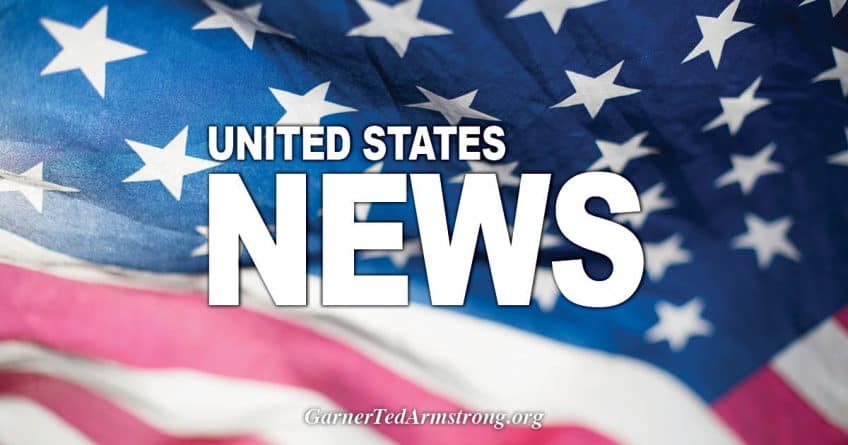
On Thursday, the Supreme Court upheld two of Arizona’s voting restrictions. -ARIANA DREHSLER/AFP VIA GETTY IMAGES
In a 6-3 decision that broke down along ideological lines, the U.S. Supreme Court on Thursday overturned a lower court’s ruling that two election laws in Arizona were racially discriminatory. But the case has implications far beyond Arizona: The ruling also seriously limits the power of the Voting Rights Act of 1965 to block voting restrictions like those currently being passed in Republican-led states — and that could make it harder for voting-rights advocates to win similar lawsuits in the future.
The case, Brnovich v. Democratic National Committee, dealt with two Arizona voting restrictions: one that made it a felony (with a few exceptions, like for family) to deliver another person’s absentee ballot, and one that threw out provisional ballots cast by voters who showed up at the wrong precinct. In early 2020, the 9th U.S. Circuit Court of Appeals sided with the Democratic plaintiffs and invalidated both restrictions on the grounds that they disproportionately harmed nonwhite voters, noting that only 18 percent of Native American voters in Arizona have access to regular mail service and that African American, Hispanic and Native American Arizonans were twice as likely as white Arizonans to vote at the wrong precinct. However, on Thursday, the Supreme Court ruled that these two voting restrictions do not violate Section 2 of the Voting Rights Act, which prohibits racial discrimination in voting, and reinstated them.
Crucially, the court also identified “guideposts” for interpreting Section 2 that it used to arrive at its decision. While the court made a point of saying it was not establishing a test to govern all Voting Rights Act Section 2 cases, these guideposts are essentially a template for future courts to follow when ruling in voting-rights cases. And that template is a decidedly conservative one. For example, “courts must consider the opportunities provided by a State’s entire system of voting when assessing the burden imposed by a challenged provision,” the court wrote — claiming that Arizona, on the whole, “makes it very easy to vote.” (It’s worth noting, however, that Arizona got a below-average grade in the 2020 Cost of Voting Index, a metric in political science used to measure the ease of voting in and across states.) The Supreme Court also suggested another factor should be “the size of the burden imposed by a challenged voting rule” — specifically, the court asserted that making it inconvenient to vote does not rise to the level of taking away a person’s right to vote.
In addition, the court noted that the “the size of any disparities in a rule’s impact on members of different racial or ethnic groups is an important factor to consider.” But the burden of proof the court requires for racial discrimination to have occurred is high. “Even neutral regulations may well result in disparities in rates of voting and noncompliance with voting rules. The mere fact that there is some disparity in impact does not necessarily mean that a system is not equally open or that it does not give everyone an equal opportunity to vote.”
Thanks to these guideposts, this ruling has implications for not only the two Arizona regulations but for laws like them around the country. So far in 2021, Republican-controlled state governments have enacted at least 33 new voting restrictions, from limits on absentee voting to tighter voter-ID laws to drop-box restrictions to early voting cuts. And up until now, Section 2 of the Voting Rights Act was a key tool for liberals who had failed to block these laws in the legislature to keep fighting them in court. Voting rights advocates have already used Section 2 to file suit against these new restrictions, including a controversial Georgia law that required proof of identity to vote absentee and prohibited giving food or water to voters waiting in line. But now those lawsuits will likely need to clear higher bars in order to be successful, even in courts that might otherwise be sympathetic (and, of course, the decision in Brnovich v. DNC strongly hints at how such lawsuits may be decided if one eventually winds up in front of the Supreme Court).
Brnovich v. DNC marks the second major blow the Supreme Court has dealt to the Voting Rights Act under Chief Justice John Roberts, who has worked against the act since his days as a young staffer in Ronald Reagan’s Department of Justice. In 2013, the case Shelby County v. Holder neutered Section 5 of the act, which requires jurisdictions with a history of racial discrimination to preclear new voting rules with the federal Department of Justice. The court called the formula for determining those jurisdictions — outlined in Section 4(b) — outdated and struck it down, with the result that Section 5 no longer covers any jurisdictions at all until Congress passes a new formula (which it has not yet done).1 The impact of that ruling was significant: According to an analysis by Mother Jones, 26 states passed new voting restrictions once the preclearance requirement was struck down — including one of the Arizona laws at issue in Brnovich v. DNC.
Indeed, this ruling is just the latest indication that one of the Roberts-led court’s main legacies will be curbing the federal government’s say in states’ voting laws (and instead, deferring more to states, which, in Republican-controlled states, has meant more restrictions in recent years). From 2009 to 2019, there were five 5-4 Supreme Court decisions on voting-rights cases, and the conservative bloc was in the majority in all five of them. In addition to its decisions in Brnovich v. DNC and Shelby County v. Holder, the court has made it easier for states to purge voters from the rolls (Husted v. A. Philip Randolph Institute) and repeatedly declined to get involved in fixing gerrymandering (Abbott v. Perez, Rucho v. Common Cause). With its new 6-3 conservative majority, it’s early yet to know how rightward the Roberts-led court will push the country, but there is no denying it has already had a deeply conservative impact on election law.
[Disclaimer]









